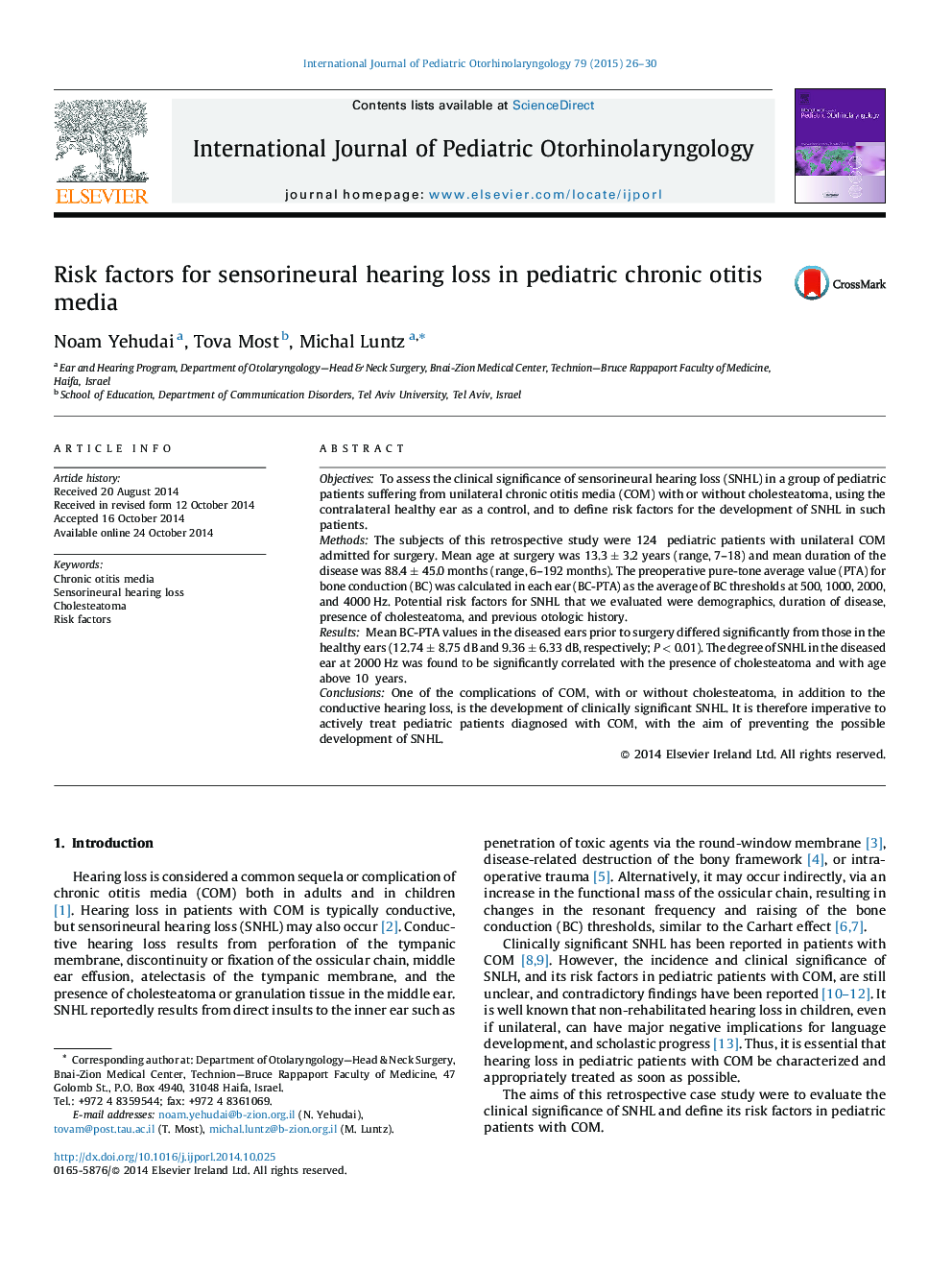| Article ID | Journal | Published Year | Pages | File Type |
|---|---|---|---|---|
| 6213467 | International Journal of Pediatric Otorhinolaryngology | 2015 | 5 Pages |
ObjectivesTo assess the clinical significance of sensorineural hearing loss (SNHL) in a group of pediatric patients suffering from unilateral chronic otitis media (COM) with or without cholesteatoma, using the contralateral healthy ear as a control, and to define risk factors for the development of SNHL in such patients.MethodsThe subjects of this retrospective study were 124 pediatric patients with unilateral COM admitted for surgery. Mean age at surgery was 13.3 ± 3.2 years (range, 7-18) and mean duration of the disease was 88.4 ± 45.0 months (range, 6-192 months). The preoperative pure-tone average value (PTA) for bone conduction (BC) was calculated in each ear (BC-PTA) as the average of BC thresholds at 500, 1000, 2000, and 4000 Hz. Potential risk factors for SNHL that we evaluated were demographics, duration of disease, presence of cholesteatoma, and previous otologic history.ResultsMean BC-PTA values in the diseased ears prior to surgery differed significantly from those in the healthy ears (12.74 ± 8.75 dB and 9.36 ± 6.33 dB, respectively; P < 0.01). The degree of SNHL in the diseased ear at 2000 Hz was found to be significantly correlated with the presence of cholesteatoma and with age above 10 years.ConclusionsOne of the complications of COM, with or without cholesteatoma, in addition to the conductive hearing loss, is the development of clinically significant SNHL. It is therefore imperative to actively treat pediatric patients diagnosed with COM, with the aim of preventing the possible development of SNHL.
